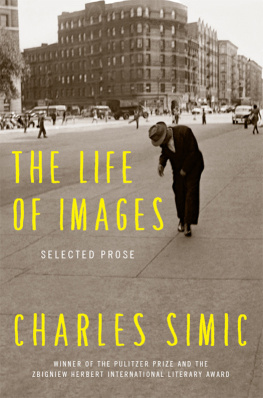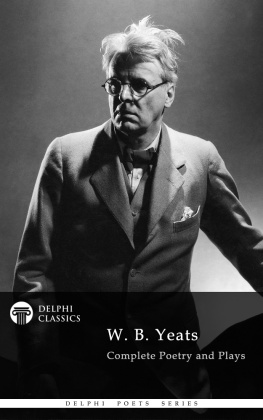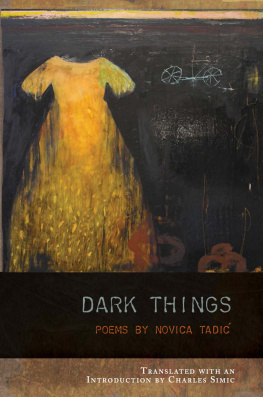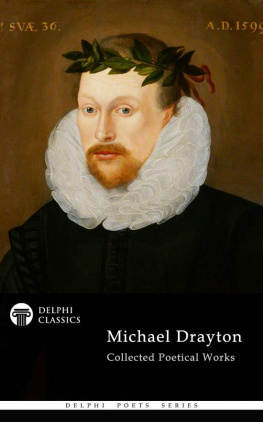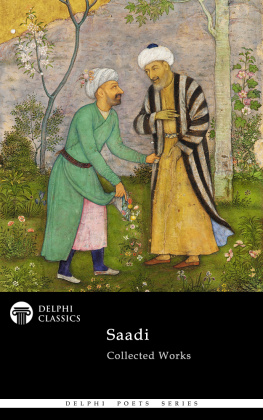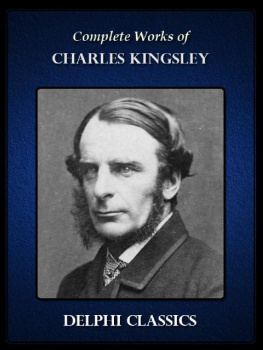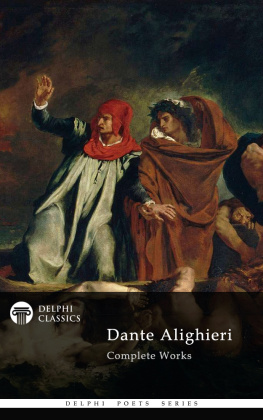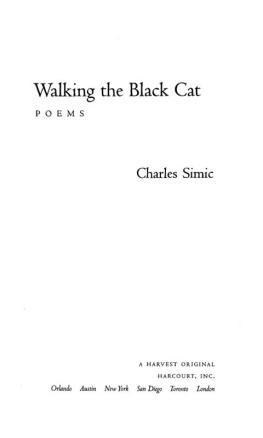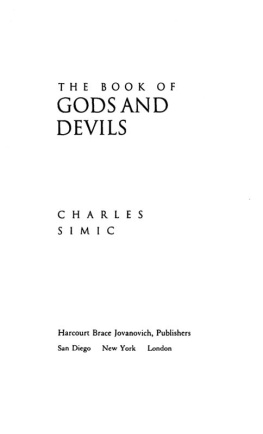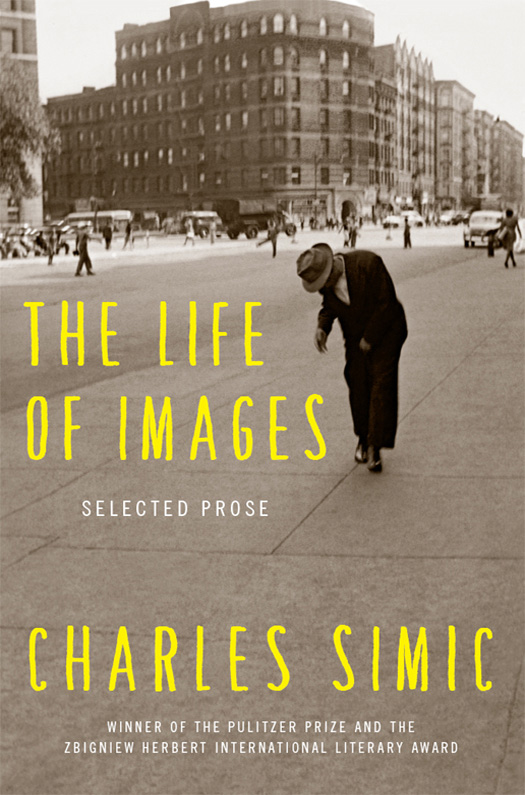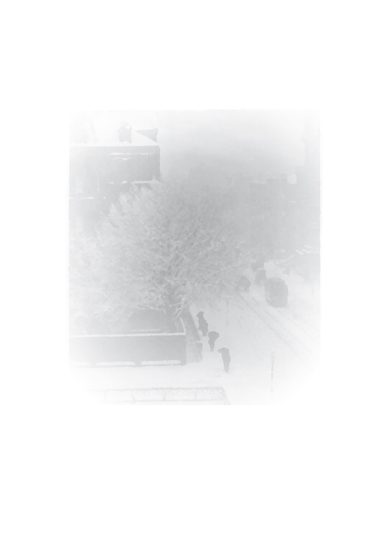
To Philip
Contents
Guide
WONDERFUL WORDS,
SILENT TRUTH
I have a photograph of my father wearing a black tuxedo and holding a suckling pig under his arm. Hes on stage. Two dark-eyed beauties in low-cut party dresses are standing next to him and giggling. Hes laughing too. The pig has its mouth open, but it doesnt look as if its laughing.
Its New Years Eve. The year is 1926. They are in some kind of nightclub. At midnight the lights were turned off, and the pig was let go. In the pandemonium that ensued, my father caught the squealing animal. It was now his. After the bows, he got a rope from the waiter and tied the pig to the leg of their table.
He and the girls visited several other establishments that night. The pig went with them on a rope. They made it drink champagne and wear a party hat. Poor pig, my father said years later.
At daybreak they were alone, the pig and my father, drinking in a low dive by the railroad station. At the next table a drunken priest was marrying a young couple. He crossed the knife and the fork to bless the newlyweds. My father gave them the pig as a wedding present. Poor pig.
*
Thats not the end of the story, however. In 1948, when my father was already on his way to America and we were starving back in Belgrade, we used to barter our possessions for food. You could get a chicken for a good pair of mens shoes. Our clocks, silverware, crystal vases, and fancy china were exchanged for bacon, lard, sausages, and such things. Once an old gypsy man wanted my fathers top hat. It didnt even fit him. With that hat way down over his eyes, he handed over a live duck.
A few weeks later his brother came to see us. He looked prosperous. Gold teeth in front, two wristwatches, one on each hand. The other brother, it seems, had noticed a tuxedo we had. It was true. We let these people walk from room to room appraising the merchandise. They made themselves at home, opening drawers, peeking into closets. They knew we wouldnt object. We were very hungry.
Anyway, my mother brought out the 1926 tuxedo. We could see immediately the man was in love with it. He offered us first one, then two chickens for it. For some reason my mother got stubborn. The holidays were coming. She wanted a suckling pig. The gypsy got angry, or pretended to. A pig was too much. My mother, however, wouldnt give in. When she set her mind to it, she could really haggle. Years later in Dover, New Hampshire, I watched her drive a furniture salesman nuts. He offered to give her the couch for free just to get rid of her.
The gypsy was tougher. He marched out. Then, a few days later, he came back to take another look. He stood looking at the tux my mother had in the meantime brushed off. He looked and we looked. Finally, he let out a big sigh like a man making a difficult and irreversible decision. We got the pig the next day. It was alive and looked just like the one in the picture.
____________
Written in 1986 as an introduction to the issue of Ploughshares magazine which I edited.
It is night again around me; I feel as though there had been lightningfor a brief span of time I was entirely in my element and in my light.
NIETZSCHE
The mind loves the unknown. It loves images whose meaning is unknown, since the meaning of the mind itself is unknown.
MAGRITTE
I wore Buster Keatons expression of exaggerated calm. I could have been sitting on the edge of a cliff with my back to the abyss trying to look normal.
Now I read philosophy in the morning. When I was younger and lived in the city it was always at night. Thats how you ruined your eyes, my mother keeps saying. I sat and read late into the night. The quieter it got, the more clearheaded I becameor so it seemed to me. In a sparsely furnished room above an Italian grocery, I would be struggling with some intricate philosophical argument that promised a magnificent insight at its conclusion. I could sense it with my whole being. I couldnt put the book away, and it was getting really late. I had to be at work in the morning. Even had I tried to sleep, my head would have been full of Kant or Hegel. So, I wouldnt sleep. At some point Id make that decision. Id be sitting there with the open book, my face reflected dimly in the dark windowpane, the great city all around me grown quiet. I was watching myself watch myself. A very strange experience.
The first time it happened I was twenty. It was six oclock in the morning. It was winter. It was dark and very cold. I was in Chicago riding the El to work seated between two heavily bundled-up old women. The train was overheated, but each time the door opened at one of the elevated platforms, a blast of cold air would send shivers through us. The lights, too, kept flickering. As the train changed tracks, the lights would go out for a moment and I would stop reading the history of philosophy I had borrowed from the library the previous day. Why is there something rather than nothing? the book asked, quoting Parmenides. It was as if my eyes were opened. I could not stop looking at my fellow passengers. How incredible, I thought, all of us being here, existing.
Philosophy is like a homecoming. I have a recurring dream about the street where I was born. It is always night. Im walking past vaguely familiar buildings trying to find our house, but somehow it is not there. I retrace my steps on that short block of only a few buildings, all of which are there except the one I want. The effort leaves me exhausted and saddened.
In another version of this same dream, I catch a glimpse of our house. There it is, at last, but for some reason Im unable to get any closer to it. No lights are on. I look for our window, but it is even darker there on the third floor. The entire building seems abandoned. It cant be, I tell myself in horror.
Once in one of these dreams, many years ago, I saw someone at our window, hunched over as if watching the street intently. Thats how my grandmother would wait late into the night for us to come home, except that this was a stranger. Even without being able to make out his face, I was sure of that.
Most of the time, however, theres no one in sight during the dream. The facades of buildings still retain their pockmarks and other signs of the war. The streetlights are out and theres no moon in the sky, so its not clear to me how I am able to see all this in complete darkness. The street I am walking on is long, empty, and seemingly without end.
Whoever reads philosophy reads himself as much as he reads the philosopher. I am in dialogue with certain decisive events in my life as much as I am with the ideas on the page. Meaning is the matter of my existence. My effort to understand is a perpetual circling around a few obsessive images.
Like everyone else, I have my hunches. All my experiences make a kind of untaught ontology, which precedes all my readings. What I am trying to conceptualize with the help of the philosopher is that which I have already intuited.
Thats one way of looking at it.
The Meditation of yesterday filled my mind with so many doubts that it is no longer in my power to forget them. And yet, I do not see in what manner I can resolve them; and, just as if I had all of a sudden fallen into very deep water, I am so disconcerted that I can neither make certain of setting my feet on the bottom, nor can I swim and so support myself on the surface. I shall nevertheless make an effort and follow anew the same path as that on which I yesterday entered, i.e., I shall proceed by setting aside all that in which the least doubt could be supposed to exist, just as if I had discovered that it was absolutely false; and I shall ever follow in this road until I have met with something which is certain, or at least, if I can do nothing else, until I have learned for certain that theres nothing in the world that is certain. Archimedes, in order that he might draw the terrestrial globe out of its place, and transport it elsewhere, demanded only that one point should be fixed and immovable; in the same way I shall have the right to conceive high hopes if I am happy enough to discover one thing only which is certain and indubitable.

